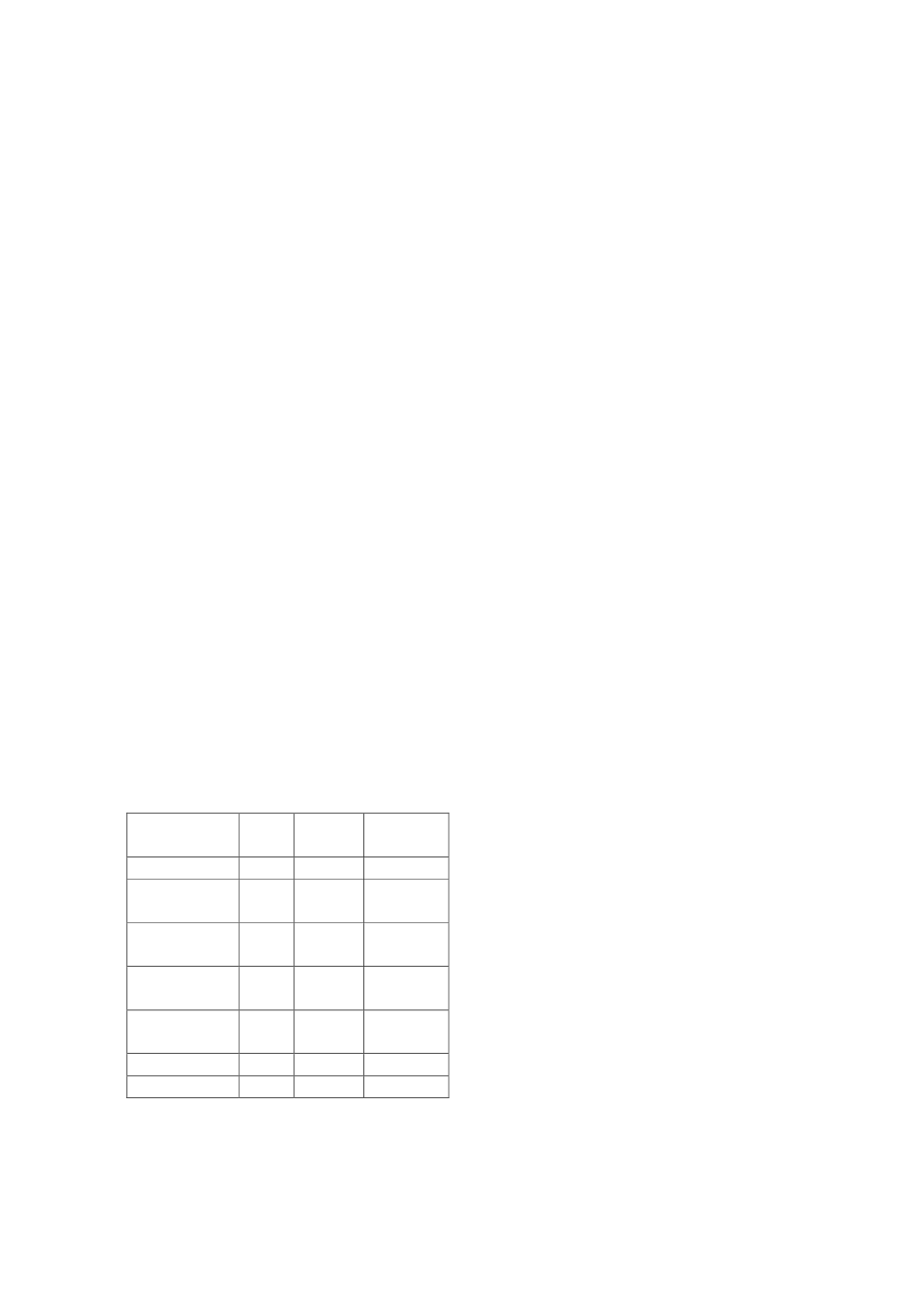
[2] produced durian peel particleboards using
synthetic binders, i.e., Urea-Formaldehyde
(UF), Phenol-Formaldehyde (PF), and
Isocyanate. Formaldehye-based adhesives,
such as UF and PF resins, currently dominate
the wood adhesive market. However,
formaldehyde, regarded by many as a toxic air
contaminant, is a human carcinogen that
causes nasopharyngeal cancer. Besides cancer-
causing hazard, exposure to formaldehyde
causes non-cancerous health problems, such as
eye, nose, and/or throat irritation [13].
Furthermore, formaldehyde emission and its
non-renewable nature have become a matter of
increasing concern. Environmentally-friendly
adhesives from renewable resources and free
of formaldehyde therefore are now being
developed to replace the UF and PF binders
(Widsten and Kandelbauer, 2008). The
objectives of this study are to produce and
evaluate the new insulation material;
“binderless” durian particleboards, using
durian peel powder as adhesive.
M
ATERIAL AND METHODS
A. Determination of the chemical Composition
of durian peel, durian peel fiber and durian
peel powder
It is necessary to know the basic and
chemical properties of raw materials. The
results of durian peel, durian peel fiber and
durian peel powder chemical analysis
performed following TAPPI standards are
shown in Table II.
TABLE II
CHEMICAL COMPOSITION OF DURIAN PEEL,
DURIAN PEEL FIBER AND DURIAN PEEL POWDER
[3,4]
Chemical
Composition
Durian
Peel
(%)
Durian
Peel Fiber
(%)
Durian Peel
Powder (%)
Ash content
4.26
3.87
4.20
Alcohol-benzene
solubility
20.7
22.0
18.9
Hot-water
solubility
33.3
38.2
37.6
1% NaOH
solubility
54.7
56.0
56.7
Lignin (ash
corrected)
15.5
10.1
9.89
Holocellulose
48.5
48.6
47.2
Pentosan
12.3
12.4
14.9
Alpha-, beta- and gamma-cellulose in pulp
(TAPPI T 203 om-93)
Alpha-cellulose is the pulp fraction
resistance to 17.5% and 9.45% sodium
hydroxide solution under condition under
conditions of the test. It indicates undegraded,
higher-molecular-weight cellulose content in
pulp. Beta-cellulose is the soluble fraction that
is reprecipitated on acidification of the
solutions. It indicated that of degraded
cellulose. Gamma-cellulose is that fraction
remaining in the solution. It consists mainly of
hemi-cellulose.
Solvent extractives of wood and pulp (TAPPI
T 204 om-88)
Soluble material or extractives in wood
consist of those components that are soluble in
neutral organic solvents.The dichloromethane-
extractable content of wood is measure of such
substance as waxes, fats, resins, photo sterols
and nonvolatile hydrocarbons. The amount is
markedly influenced by seasoning or drying of
the wood. The ethanol-benzene and ethanol-
toluene extractable content of wood consists of
certain
other
dichloromethane-insoluble
components, such as low-molecular-weight
carbohydrates, salts and other water-soluble
substances. Since the pulping process usually
removes most water-soluble and volatile
compounds that are also soluble in organic
solvents, the solvent extractable materials in
pulp may be considered to consist primarily of
resin and fatty acids and their esters, waxes
and unsaponifiable substances. No single
organic solvent is capable of removing all
these substances and different solvents remove
different combinations. The mixture, ethanol-
benzene appears to provide the most complete
removal of residual solvent-extractable
substance in pulp.
Water Solubility of wood and pulp (TAPPI T
207 om-93)
The cold-water procedure removes a part of
extraneous components such as inorganic
compounds, tanning, gums, sugars and
colourings matter present in wood and pulp.
The hot-water procedure removes in addition
starches.
Ash in pulp (TAPPI T 211 om-93)
The ash content of the sample may consist
of (a) various residues from chemicals used in
its manufacture, and (b) metallic matter from
piping and machinery. The amount and
composition of the ash is a function of the
presence or absence of any of these material or
others singly or in combination. No specific
qualitative meaning is attached to the term
“ash” as used in this test method. Where a
further qualitative examination of the ash is
desired, this method may be used in
combination with TAPPI T 421 “Qualitative
2013 International Conference on Alternative Energy in Developing Countries and Emerging Economies
- 720 -


